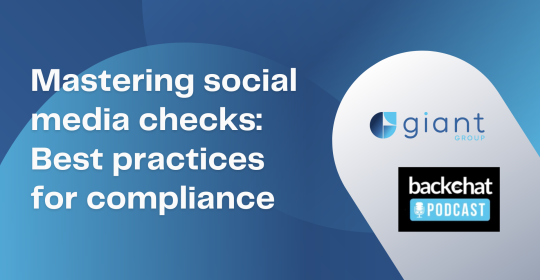This week I had the opportunity to meet with both Oracle and PeopleSoft (separately of course) to look at and discuss the latest versions of their e-recruitment modules. These meetings got me thinking about the debates going on inside organizations that own ERP solutions between the virtues of using their vendorís e-recruit module vs. one offered by a best of breed vendor.
Placed head to head with the best of breed point solutions, ERP e-recruit modules still fall short. This is true when comparing features and functionality, flexibility, configurability, frequency of upgrades; ease of implementation, and, to a lesser degree, sales models and customer support.
In the real world, however, there are other factors that influence decisions. IT departments, the CFO, the CIO, and others generally weigh in on the side of choosing the ERP vendorís solution by default. I wonít get into the reasons in detail here but they have to do with data and horizontal systems integration (ERP is better), ITís comfort in working with the ERP vendor and its technology, and, at least in the case of PeopleSoft, the real or perceived belief that the ERP solution is free, or at worst - less expensive than point solutions. Another, often overlooked factor may be the organizationís procurement/RFP procedures. Onerous procedures and rules may discourage a competitive process, and because the organization has already purchased the ERP license, it can often add additional modules without having to go to an RFP.
HR departments are often eager to identify a solution through a competitive process (RFP). They know theyíll take the brunt of complaints and criticism and be responsible for solving many of the usability problems post implementation. Naturally, HR wants to identify the solution that best meets the organizationís needs (being the conscientious people they are).
This brings us to the negotiation and decision making process that many HR departments have with other parts of the organization to determine its approach to obtaining an e-recruitment solution. In that most HR VPs and directors would probably agree (all else being equal) that using their ERP vendorís solution is the simplest way to proceed, the following are steps that HR departments should take before recommending a competitive process:
1. Understand exactly what the phase one requirements are for your e-recruit solution. This is essential knowledge if selection is going to be properly aligned to needs. While it is still true that best of breed solutions are superior to ERP e-recruit solutions from a features and functionality point of view, this does you no good if you arenít planning to use the additional bells and whistles. If important to you, make sure that in addition to typical features and functionality, you cover things like:
-Flexibility. Can the ERP solution handle multiple roles, security levels, vendor access and multiple workflow configurations? Can post-implementation changes to look and feel, database fields and workflows be done by non-technical administrators in your organization, or, are IT and vendor support necessary? Your ERP vendor may be able to show you impressive features and functionality but are they dependent on other modules being functional in your system? For example, can you create an entire job requisition from scratch or do you need to pull description data from elsewhere in the ERP? Can you enter the name of a new approval manager in free form in the e-recruit module, or do you have to select an existing name from another module?
-Post implementation support. Unlike best of breed e-recruit vendors, ERPs have many other modules and lines of business to develop, support and manage. Has the ERP vendor properly staffed its e-recruit department? Are there sufficient technical resources to ensure regular upgrades? Are there expert account managers and telephone support personnel to answer your questions and address concerns?-
What does implementation entail? Naturally, ERP vendors like to obtain consulting contracts with sales of their solutions. How many internal IT resources and/or external contractors or consultants is it going to take to implement the ERP e-recruit solution? Best of breed ASPs can implement solutions in a few weeks or a few months. Does the ERP offer an ASP model for quicker implementation if necessary?
2.If your organization is using a pilot or phased-in approach to e-recruitment, know the roll-out schedule even if it is just based on estimates. If, in future, your company is planning to use some of the features that your ERP vendor doesnít currently offer, go back to your ERP vendor and ask about their upgrade schedule. If they plan to introduce the features youíre looking for according to a schedule that precedes your requirements, and youíre confident of their ability to deliver, you may be safe with their solution.
3.If your ERP vendor is missing something you need that can be supplied by a 3rd party vendor (background checking, resume processing, job distribution, etc.) determine whether they can integrate your vendor of choice to the degree you require, how long it will take, and at what price. A point solution may have already resolved these issues to your satisfaction but if your ERP can readily accommodate you (price, time, and level of integration) you can eliminate this as a reason to recommend a competitive process.
4.So far, Iíve assumed that youíve done your research solely with the vendor. The next step is to get reference client contacts, preferably with organizations similar to your own in size, industry and complexity/needs. Try to do on-site visits to see how the solution works in a real environment. Ask to speak to a range of users about their impressions of the system, including HR users, recruiters, hiring managers, administrators and internal candidate users. If after visiting or at least interviewing several reference clients, you still have doubts, cold call some of their non-reference clients; chances are at least some will discuss their experiences with you.
Iím not suggesting that the steps outlined above represent comprehensive due diligence. Performing them, however, might save time, money, and future regret. HR departments should not automatically take a stance against ERP e-recruit solutions any more that IT and finance should automatically take the opposite view. An HR department that conducts the research above will have developed a case for recommending either approach (ERP or competitive) that will be difficult to refute. Either way, they will have taken the initiative and driven the decision rather than assumed a passive role.
Please stay tuned for parts two and three of this series: In part two, more about the ERP vendorsí latest e-recruit offerings vs. the best of breedsí and, with Web services architecture, do the ERPs lose a big advantage? In part three, where do job board packaged solutions fit in (i.e. Monster, Workopolis, Yahoo HotJobs/SoftShoe)? How big can they scale?
Allan Schweyer
aschweyer@hr.com
www.hr.com
Allan Schweyer has been involved in Internet recruiting since 1994 when he pioneered e-recruitment solutions for Human Resources Development Canada. From 1995 to 1999, Allan directed the award-winning National Graduate Register, Campus WorkLink and SkillNet.ca programs with Industry Canada, which introduced the concepts of applicant tracking and advanced screening to job boards and ìcareer networksî to job seekers. In 1999, Allan formed the On-line Recruitersí Association of Canada. In 2000 and 2001, he worked with Cahners Business Information in Boston to build information portals for technical professionals and attended graduate school at Harvard University. Allan currently consults with large organizations on HR strategies and specializes in e-recruitment projects. He is a senior researcher and analyst with HR.com and the guest editor of the HR.com staffing vertical.
Vendorís e-recruit module vs. one offered by a best of breed vendor.

(The Staffing Files)<br>Allan Schweyer





